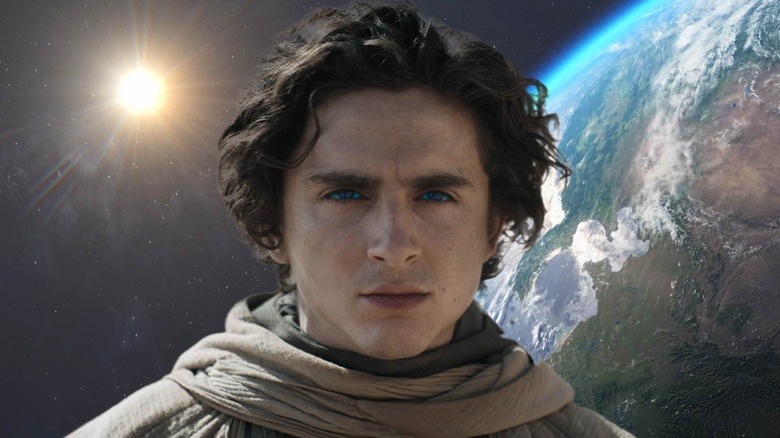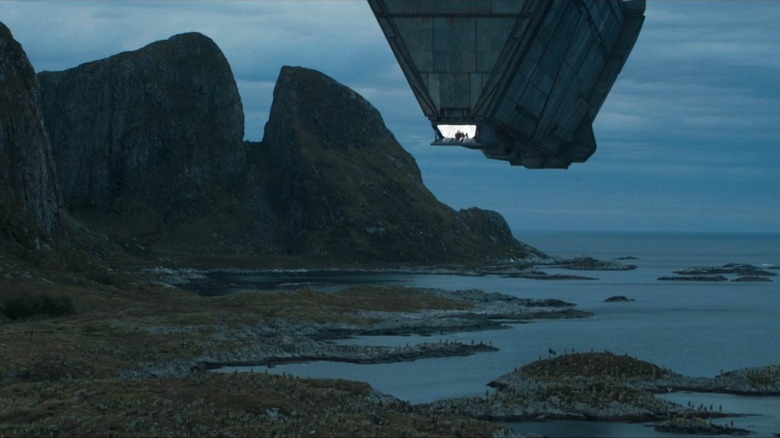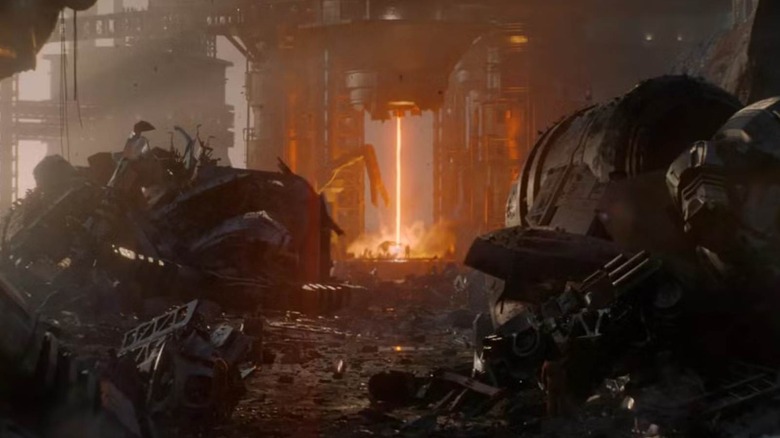In 1965, Frank Herbert delivered an epic tale of families at war for spice, sandworms, and planets as far away from Earth as space travel will allow — one that would go on to be adapted into one of the best sci-fi movies ever, “Dune.” But how does Earth even figure into the broader “Dune’ narrative, huh? What’s a civilization gotta do to get involved in the intense knife-chipping affairs of the Atreides and the Harkonenns? Sure, Arrakis is cool and Geidi Prime might have its bellowing hype-men for sending soldiers off to war, but again, what about our own tiny blue dot in the universe? Is it even still around when “Dune” takes place? What gives, Herbert? Why can’t Earth get it on the action?
Well, it turns out that our little speck in space does, in fact, get a mention in the reign of Paul Atreides. However, it goes by a few different names and doesn’t hold nearly as much sway as the world once known as Dune. In fact, Earth has become a largely forgotten plot of land floating among the stars when Paul Atreides eventually takes over Arrakis. Even so, what records remain of its place in history end up providing some valuable lessons for both Paul and the next generation of Atreides. Moreover, Earth in the “Dune” universe has a different history from ours. It’s also one that has shifted as much as the sands of Arrakis, depending on who you ask.
In Frank Herbert’s original Dune books, Earth became a giant national park
The history of the planet Earth, which is often referred to as Terra, Old Earth, or Old Terra, in the “Dune” mythology can be difficult to piece together, in part thanks to Frank Herbert and various books written after his passing. Initially, Earth in the original “Dune” novel was presented as being the same as ours. However, according to “The Dune Encyclopedia” (itself a work approved by Herbert before he died and a document that exists within the “Dune” universe, though some folks don’t consider it strictly canonical), the “Dune” version of Earth was hit by an asteroid in our far future (or the distant past of Paul Atreides), which made it uninhabitable for any form of life. Years later, work was done to bring Earth back to its former glory, turning it into essentially a national park on a global scale where plant and animal life could flourish.
By that point in the “Dune” timeline, additional planets in the solar system had been colonized by humanity and were being inhabited by people in large numbers, leaving Earth to be forgotten. So much so that, by the time Paul had aligned himself with the Fremen on Arrakis, Earth had become an almost mythical place, although details of its existence remained public knowledge. Later entries in Frank Herbert’s sci-fi saga would eventually revisit Earth’s past when Paul looked up forgotten names in the darkest chapters of human history (hoping to gain some perspective on his own troubles).
Paul Atreides studied the history of Earth to fix his future in Dune: Messiah
While Earth might be a forgotten point in space in Frank Herbert’s original books, it doesn’t stop Paul researching where humanity came from and those that tried to take a similar approach as him, just on a smaller scale.
In Herbert’s third book, “Dune: Messiah” (which Denis Villeneuve wants to adapt after his epic success with “Dune”), Paul requests that Stilgar research the Golden Age of Earth and study the likes of Genghis Khan and Adolf Hitler, whom Paul actually compares himself to in terms of their kill counts. “There’s another emperor I want you to note in passing — a Hitler. He killed more than six million,” Paul states. “Pretty good for those days.”
While it’s a chilling illustration of just how far Paul had fallen by that point (having killed 61 billion individuals and “sterilized” planets), it also shows that not all of Earth’s history has been forgotten. It’s later revisited by Paul’s children, Leto II and Ghanima. In “Children of Dune,” the two speak French privately to one another, even though it’s considered a forgotten language. Likewise, in “God Emperor of Dune,” Leto II refers to historical figures like Napoleon and Bach. However, it’s in the expanded stories of the “Dune” universe’s history written by Frank Herbert’s son, Brian Herbert, that things get a little iffy regarding Earth, no matter what a certain Max series might tell you.
Dune’s Earth was ruined by war, space rocks, and uneven continuity
Besides an asteroid causing issues, there was also a point in time where Earth was wrecked by humanity’s own doing. It’s only lightly mentioned in Frank Herbert’s original “Dune” books, but 13,000 years after the asteroid put a dent in our home world, it became the base for the The Butlerian Jihad (which itself is depicted in different ways depending on which “Dune” book you’re reading).
In Frank Herbert’s original novels, The Butlerian Jihad was a crusade against computers after they became “thinking machines” that tried to overthrow humanity, which led to a rebellion. However, according to the Expanded Dune lore by Brian Herbert and Kevin J. Anderson, a machine network known as Omnius led the charge against the human race in a fashion that’s similar to how Skynet took over the Earth in the “Terminator” movies. This was explored in “Dune: The Butlerian Jihad” in 2002 as part of the “Legends of Dune” prequel trilogy. The actual conflict left Earth in ruins and is a major event highlighted in “Dune: Prophecy,” though it’s yet to be shown in the “Dune” movies.
This chapter in human history left Earth uninhabitable for centuries and, as a result, led to the planet becoming more of a memory in the universe than the shining foundation of humanity that it once was. Understandable, really. When you’ve got other planets with worms the size of buildings you can visit, boring ol’ Earth just doesn’t seem all that fun anymore. Solana Token Creator











